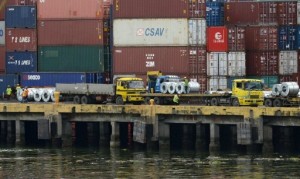MANILA, Philippines—The Philippines’ major banks have completely abandoned the central bank’s rediscounting facility as they sought cheaper funds from other sources in the country’s cash-rich financial sector.
Data from the Bangko Sentral ng Pilipinas (BSP) showed universal commercial banks had no rediscounting loans at all in January.
Loans taken out by smaller thrift and rural banks also fell to P36 million or 99.2 percent less than the P4.32 billion in rediscounted loans they tapped in the same month last year.
“Universal and commercial banks did not (avail themselves of rediscounting loans) during the period because the banking system was generally liquid,” BSP Deputy Governor Diwa C. Guinigundo said.
Rediscounted loans are bank receivables that are sold to the central bank for extra funds that can subsequently be lent out to businesses and individual borrowers.
The Bangko Sentral’s rediscounting facility ensures that, in times of tightness in credit, banks still have funds to lend to productive sectors of the economy.
However, the amount of loans banks get from the rediscounting facility has been falling steadily since last year due to the availability of cheap cash in the financial system.
Money supply or M3 rose by a record 36.5 percent in November last year as a ban on nonpooled funds being parked in the central bank’s special deposit account (SDA) window took effect. Banks were forced to withdraw the affected funds, most of which were transferred to time deposits and invested in government securities and other low-risk papers.
Guinigundo said that apart from the exit of funds from SDAs providing more than enough liquidity to keep banks solvent, recent changes in rules for the rediscounting window might have contributed to the decline in rediscounted loans.
“Following the restructuring of the rediscounting windows with accompanying increase in rates, (banks) are probably turning to other funding sources that charge lower rates,” he told the Inquirer.
Under previous rules, rediscounting loan rates were pegged at the BSP’s benchmark overnight borrowing rate, which now stands at a record low of 3.5 percent. Old rules also set the BSP’s rediscounting budget at P20 billion.
New rules passed in the second half of last year turned the rediscounting facility into an open-volume window, allowing banks to borrow as much as they want. This change, however, came with an increase in rates.
For major banks, loan rates are now based on the BSP’s overnight lending rate, which is higher than the borrowing rate at 5.5 percent, with a corresponding premium depending on the maturity.
Previous records showed that the country’s banking system had P17.96 billion in outstanding rediscounting loans at the end of last year. This was 61.4 percent lower year on year.


